

Beryllium (Be) is the fourth release of OpenDaylight (ODL), the leading open source platform for programmable, software-defined networks. Multivendor, traditional and greenfield, ODL is the industry’s de facto SDN platform, supporting a broad set of use cases and providing the foundation for networks of the future.
Service providers and enterprises are using ODL to solve key network challenges related to Automated Service Delivery; Network Resource Optimization; Cloud and NFV; Research, Education and Goverment; and Visibility and Control. ODL Be strengthens its architecture based on the Model Driven Service Abstraction Layer (MD-SAL) to deliver higher scale and the ability to easily incorporate new applications and protocols.
Those who have already deployed ODL will see significant improvements in performance, scalability and functionality with ODL Be. New network services offer clustering and high availability, improved data handling, messaging for transport, greater abstraction of network models, broad management of network elements, and a new GUI. ODL Be is the ideal platform to get a full range of options for configuring policy and intent, and there are several built on ODL that make the transition to SDN even easier.
OpenDaylight has become the de facto platform for service providers and enterprises making the transition to SDN. See how organizations are deploying ODL in our blog.
- | | |
SCREENSHOTS
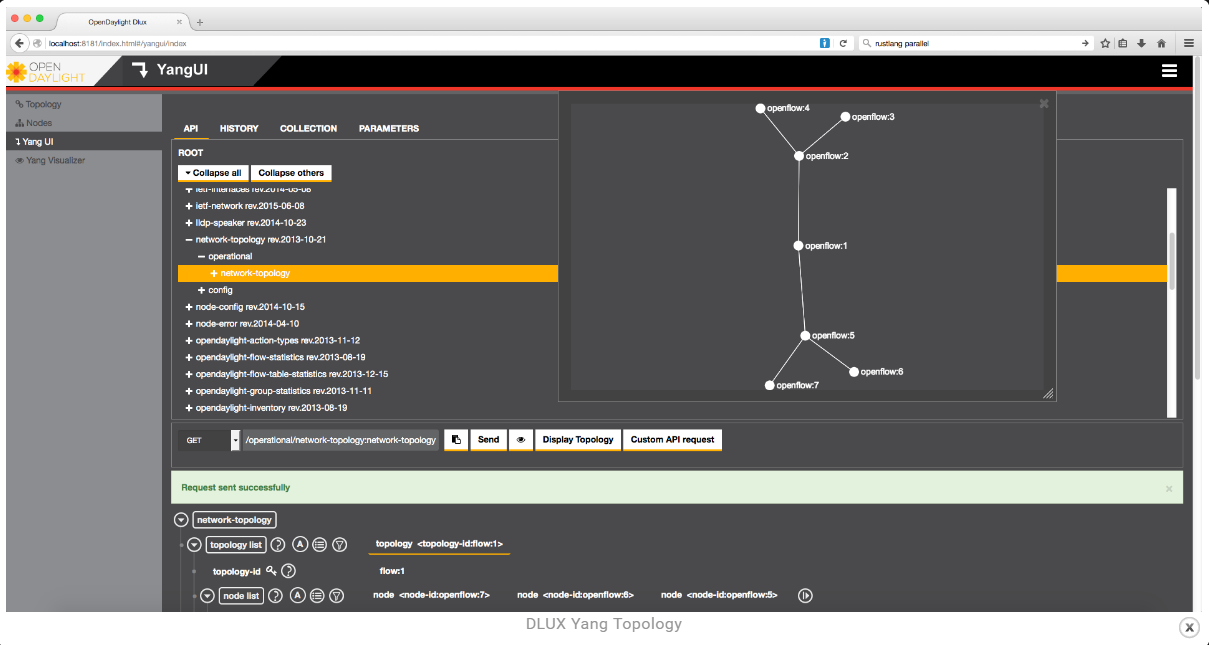
DLUX YANG Topology
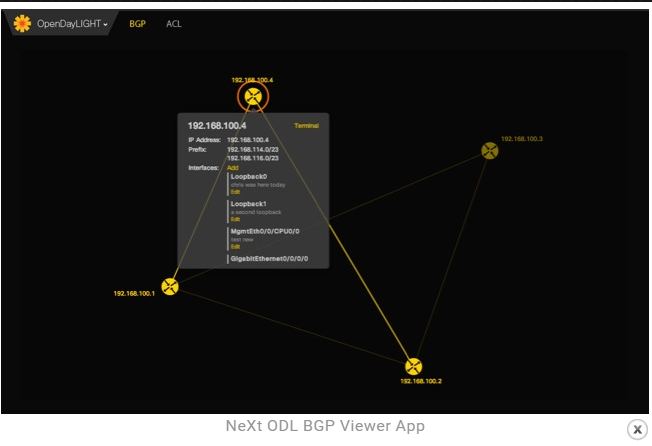
OpenDaylight NeXt ODL BGP Viewer App
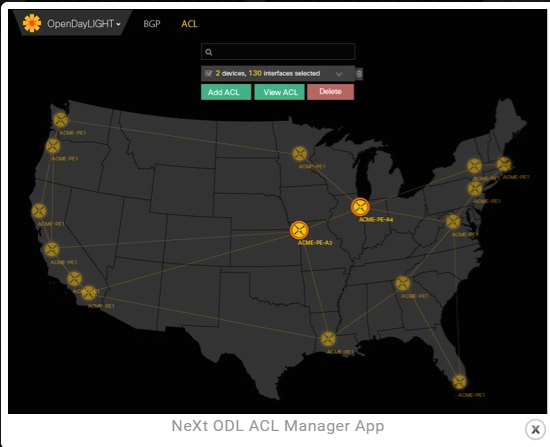
OpenDaylight NeXt ODL ACL Manager App
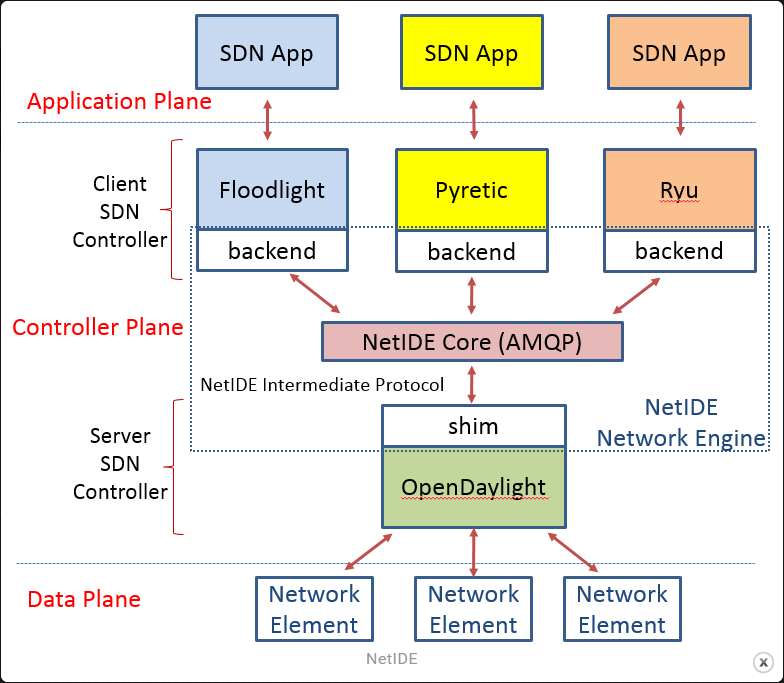
NetIDE
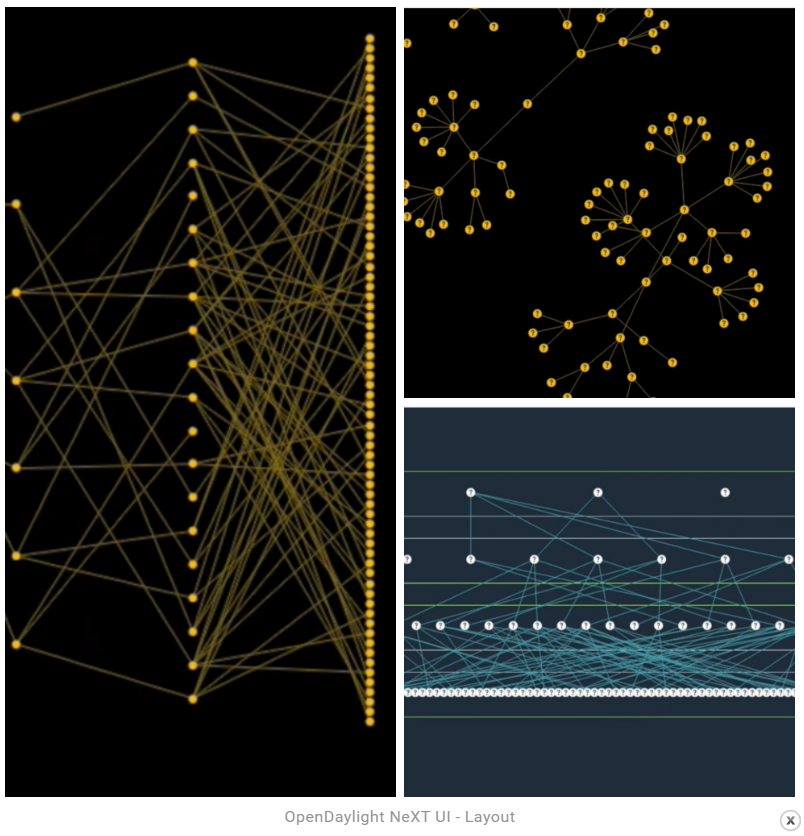
OpenDaylight NeXT UI - Layout
NEW FEATURES IN ODL BE
Performance and Scalability
Stronger analysis and testing of clustering (where multiple instances of ODL act as one logical controller) appear in ODL Be. Applications that want to be cluster-aware can choose how to put data across the cluster.
For the first time in ODL, the Be release includes all the components necessary to fully support OpenStack High Availability and Clustering with improved support for Neutron APIs and features. As of the Be release, ODL enables workload placement on hosts with DPDK-accelerated virtual switches.
Ease of Adoption
ODL Be continues to integrate features to improve interoperability for multivendor environments with updates to its microservices architecture and new projects like NetIDE for SBI-independent access to network resources or NEMO. The NeXt UI feature allows you to better understand ODL’s functionality through user-friendly visual displays. Updated documentation is available to aid in installation and deployment.
Abstracting Network Models
ODL Be includes the widest range of configurations for policy and intent of any controller or platform. Four methods are supported - NEMO, Application Layer Traffic Optimization (ALTO), Group Based Policy (GBP) and Network Intent Composition (NIC) - providing unparalleled flexibility for intent-based management and direction of network services and resources.
Broad Set of Use Cases
ODL Be provides the broadest set of , both traditional and greenfield, for service provider and enterprise networks. New services and architectural improvements in Beryllium will enable new use cases in the areas of Cloud and NFV as well as adding scale and flexibility to the traditional use cases in the areas of network resource optimization and automated service delivery.
ARCHITECTURE DIAGRAM
View the complete and descriptions.